
Chess for Beginners - Common Chess Mistakes and How to Avoid Them
by sdmathis
Chess is a game of mistakes. Here are some of the most common chess mistakes and how to avoid them.
Chess is a game of mistakes. Savielly Tartakower said “The winner of the game is the player who makes the next-to-the-last mistake.” The main difference between the Grandmaster and the novice chess player is the number and the magnitude of their mistakes. A Grandmaster may make a mistake that gives a subtle positional advantage to his opponent, where a beginner may blunder away his Queen. The key to becoming a better chess player, then, is in the mistakes. The first step is recognizing the most common novice mistakes and avoiding them. Here are a few to work on.
Mistake #1: Bringing the Queen Out too Soon
One bad move nullifies forty good ones. - I.A. Horowitz
A common chess strategy for beginners (and a common mistake as well) is the premature deployment of the Queen. The Queen is the most powerful weapon in any chess players’ arsenal, so why not bring out the big guns early and catch your opponent off guard? Because, not only is the Queen is the most powerful peace on the board, it’s also the biggest target on the board. Consider the following example from the Center Counter opening. After 1.e4 d5 2.exd5 Qxd5 3.Nc3, White finds his Queen under attack and must move it a second time (another novice mistake).
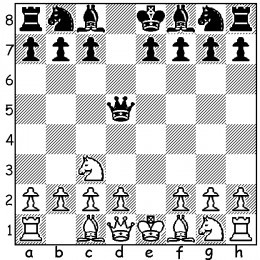 After 2. Nc3 |
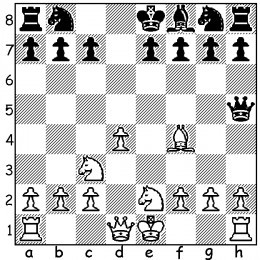 After 7. Bf4 |
3. … Qa5 is the most popular move, but suppose that Black is a beginner and makes a typical novice mistake.3.Qe5+ 4.Be2 Bg4 5.d4 Bxe2 6.Ngxe2 Qh5 7.Bf4.This gives White a giant lead in development (yet another novice mistake).
I can hear it now. “But I’ve seen people win while playing this opening hundreds of times. Besides, Hikaru Nakamura has been known to bring his Queen out as early as the second move and use it to destroy his opponent.”
It’s true, the Center Counter is a fairly solid opening, but it does violate a basic rule by deploying the Queen very early. If you choose to play this opening, or any opening where you move your queen out early, you do so at your own peril. Your Queen will have a big red target painted on her back and she may become a liability rather than an asset.
As far as GM Nakamura’s occasional early Queen play goes, we have to remember that you and I are not Hikaru Nakamura. At the time that I am writing this, GM Nakamura is the top rated player in the United States and could annihilate many of his opponents without his Queen. Besides, if he was playing a top opponent, you can rest assured that his Queen would not venture out until the proper time.
A lead in development is so important that many people will sacrifice one of their pawns in order to achieve it. That’s the thinking behind the King’s Gambit, Queen’s Gambit, and other Gambits. A lead in development is so vital that few sane players would willingly give it up? There are many ways that novice players fall behind in development, but one of the most common is by moving the same piece more than once during the opening.
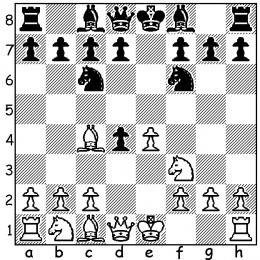 After 4. …Nf6 |
Here is an example of the Two Knights Defense where White sacrifices a pawn in order to gain a lead in development only to squander it away by moving a piece twice and being forced to move a second piece twice. We come to the following position after 1.e4 e5 2.Nf3 Nc6 3.d4 exd4 4.Bc4 Nf6.
A good move for White would have been 5. e5. This would have forced Black to move his Knight a second time, but unfortunately White chose5.Ng5, threatening 6. Nxf7 and forking the Queen and the Rook. White failed to consider, however, Blacks obvious reply (another common novice mistake). 5. …Ne5. Black’s response not only defends the f7 square, it also attacks the Bishop on c4 forcing it to move a second time. After White moves the Bishop, Black will push the h7 pawn forcing the Knight back to its original position. This is just "how to play chess for dummies" because white has lost his lead in development and Black has the iniative. His pawn sacrifice is for naught and Black is winning.
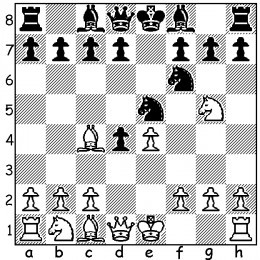 After 5. …Ne5 |
Mistake #3: Acting Before you Think
The trend in today’s chess world is toward faster and faster time controls. Standard chess is giving way to the more extreme Blitz, Lightening, and Bullet chess just as snow skiing is giving way to extreme snowboarding and mountain biking is giving way to mountain unicycling with the seat replaced by a spike (okay, I made up the part about unicycling). The point is that as the younger generations enter a sport or activity, they are becoming bored with standard play and are pushing themselves to the extreme. Chess is no different. Except in tournament play, long time controls are a thing of the past.
You don’t learn to mountain bike by hopping on a bike and peddling down Pike’s Peak. You first learn to ride a tricycle, then a bicycle with training wheels, then you remove the training wheels, etc… It’s the same with chess. Novice chess players must learn to take their time and think each move through. Rapid chess moves are for the experienced player, and impulsive chess moves are for nobody.
As a beginner, Former World’s Blitz Champion, Susan Polgar, had such a problem with touching the pieces before finding the correct move and/or making impulsive moves that her father made her sit on her hands until she had carefully considered all the candidate moves and made a final choice.
If you frequently experience the agony of discovering a better move moments after moving your piece, you may want to consider sitting on your hands. It hasn’t hurt GM Polgar, and.it is probably one of the best chess tactics for beginners that I know.
Chess is not played in a vacuum. Sitting across from every player is an opponent, and that opponent has decided that he wants to win the game. Many beginners, however, seem to forget this and never consider why an opponent made a move or what he will do after you make your move. Consider the following game by two beginners:1.e4 e5 2.Qh5. White has made a beginner’s mistake by bringing his Queen out early, but Black will make a beginner’s mistake himself by not asking himself “Why did my opponent make that move?
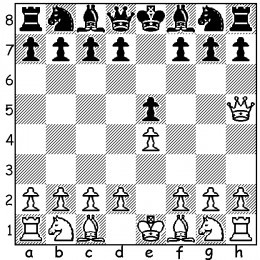 After 2. Qh5 |
What is his threat?” If he had asked himself those simple questions, he would have seen that his e5 pawn is under attack and that Nc6 would be a good response.
Instead, he chose to drive the Queen away by playing 2. …Qg6. Had he asked the question: “If I move my pawn to g6, what will be his next move?” he would have seen3.Qxe5+ and saved his Rook.
This may seem too dumb to ever happen in an actual game, but thousands of novice chess players make this exact mistake every year. Your mistakes may be more subtle, more advanced, but it’s really the same mistake if you are moving without considering why your opponent made the move that he did and what his probable response will be to your move.
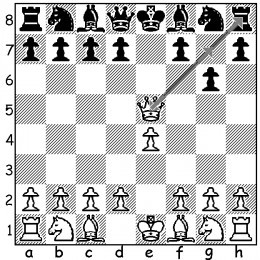 After 3. Qxe5+ |
Mistake #5: Falling for Silly Traps
Everybody does it. Even Grandmasters do it. Falling for silly traps is probably the worst mistake that any chess player can make because not only do you lose a something of value (a piece or even the game), but you feel like a real idiot when it’s over. Consider the following game: 1.e4 e5 2.Nf3 d6 3.Bc5 Bg4 4.Nc3 a6 5.Nxe5.
Wow! White just gave Black his Queen! You better take a second look. If it looks too good to be true, it might be. It’s time to stop, sit on your hands, and carefully consider the situation. In novice games, it’s not unusual for a player to blunder away his Queen, but in this case it’s a trap. Look what happens to white if he falls for it. 5. …Bxd1 6.Bxf7+ Ke7 7.Nd5#.
This is called Legal’s Mate and it’s well known. Most beginners, however have never seen this before, or if they have, they don’t remember it. A Novice without the experience of falling into many, many traps must rely on careful examination of the position.
You will fall into traps. It’s part of novice chess play and it’s inevitable. After you have gained some experience, you will recognize many of the traps and avoid them. Until then, remember that if a situation seems too good to be true, it might be a trap. Stop, sit on your hands, and think.
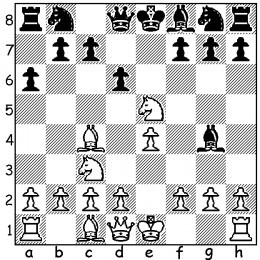 After 5. Nxe5 |
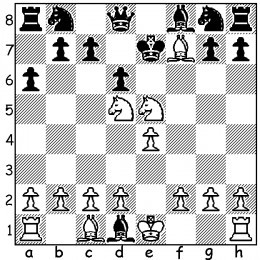 After Ne5# |
Those are just some of the many mistakes that beginners make while learning how to play chess. Avoiding mistakes isn’t always easy. If you learn the basic principles and remember to stop, sit on your hands, and think, you should be able to avoid most of them.
You might also like
Playing ChessPlaying Chess is a fun way to develop logical thought, a skill that has many ...
Come Play Chess With Me...PleaseI can’t tell you how many times I have played the game but I sure can tell yo...
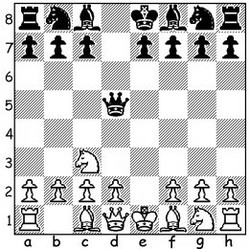


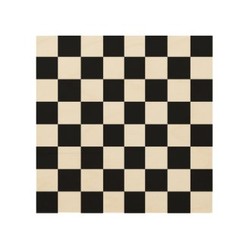
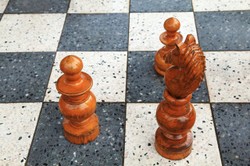
Comments
This is a great article. I never thought about holding my Queen back before.